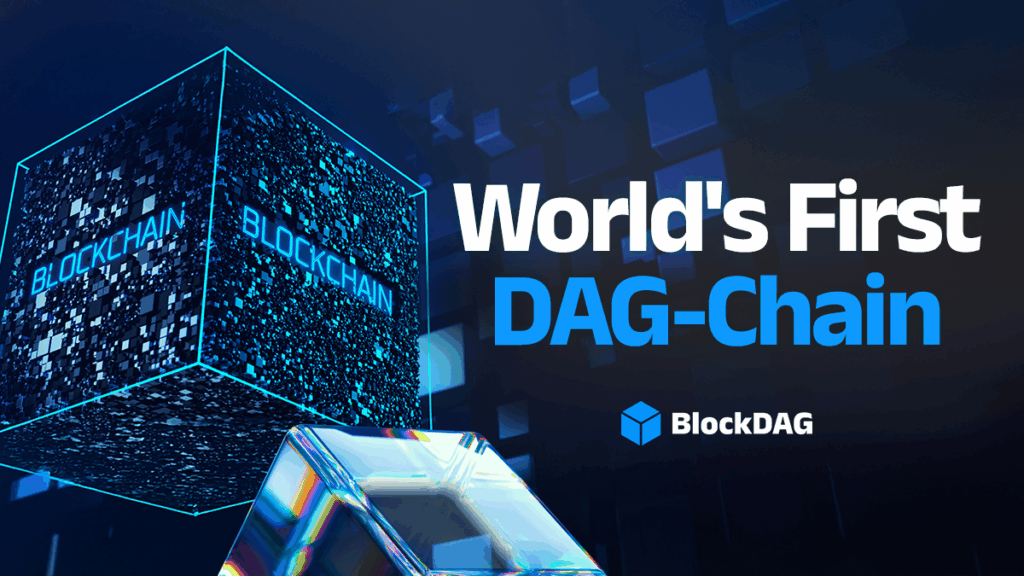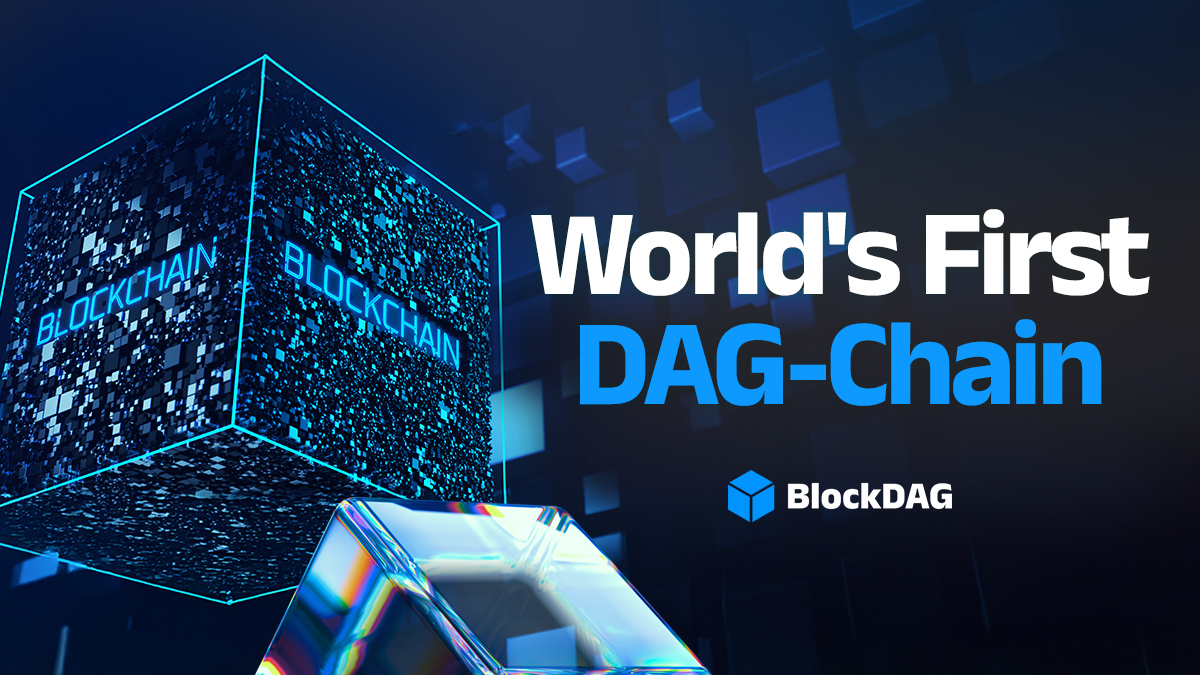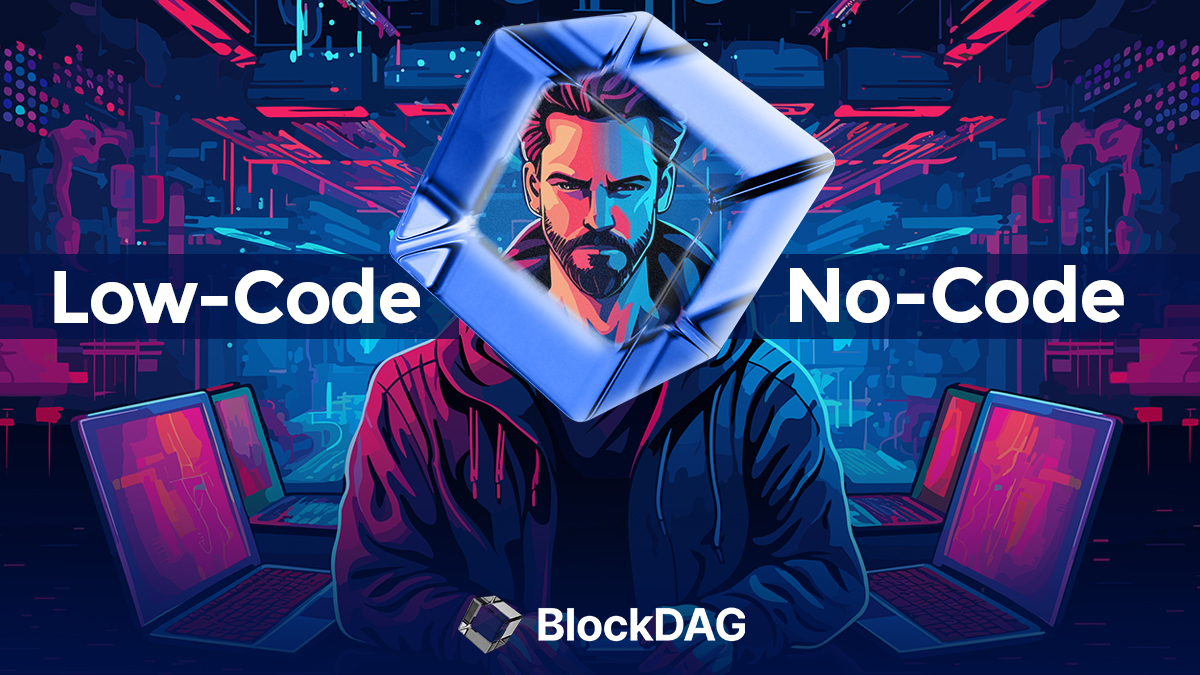Some blockchain projects develop slowly with heavy focus on research, while others move quickly, offering simpler access to developers. Cardano and BlockDAG (BDAG) represent these two different styles. Cardano has earned recognition for its cautious, research-based approach. Meanwhile, BlockDAG, having already raised over $351 million in presale funding, is attracting significant attention from the developer community, even before its full-scale release.
In this article, we compare Cardano and BlockDAG across five key categories: technical design, developer tools, ecosystem activity, ease of entry, and growth potential.
1. Technology Structure: Traditional Blockchain vs DAG Efficiency
Cardano works on a classic blockchain format using Ouroboros, a Proof-of-Stake protocol designed to improve energy use and enhance security. Transactions follow a sequential path, being recorded one block at a time. While this setup offers consistency, it can sometimes slow down under heavier network load.
BlockDAG, however, uses a Directed Acyclic Graph (DAG) system. This allows multiple transactions to be processed simultaneously rather than one after the other. As user activity increases, the DAG model helps the network handle more data efficiently. This setup often results in quicker processing times and improved scalability compared to traditional chains.
For those building or using the network, this means BlockDAG can maintain speed and dependability as activity grows.
2. Developer Tools: Advanced Coding vs Easy Access
How developers interact with the platforms makes a major difference. Cardano’s foundation lies in Haskell for its core and Plutus for its smart contracts. These tools, while powerful, have a steep learning curve, especially for those coming from Ethereum or other common languages.
BlockDAG removes this challenge. Fully compatible with Ethereum’s Solidity and related tools, it allows builders to begin quickly. On top of that, a low-code smart contract creator enables even non-programmers to design and deploy contracts with drag-and-drop features. This accessibility expands its user base to include both advanced coders and those just getting started.
3. Ecosystem Progress: Real Projects vs Early Builds
Cardano, active since 2017, hosts a few live projects like the Djed stablecoin and SundaeSwap DEX. However, development continues at a careful pace, and many apps are still in early or test phases.
By contrast, BlockDAG has already launched a public testnet while still in presale. Over 4,500 developers are working on more than 300 real projects. These aren’t just prototypes; several are preparing for mainnet deployment. The range of apps being built spans DeFi solutions, AI-powered platforms, and practical payment systems.

BlockDAG’s efforts have earned it audits from CertiK and Halborn, confirming security strength. Additionally, the project has built ties with HackerEarth and partnered with the Seattle Seawolves rugby team, showing active outreach beyond crypto circles.
4. Entry Points: High Barriers vs Open Access
Cardano prioritizes long-term security and consistency. While this makes the platform reliable, it also increases the entry difficulty for those unfamiliar with its technical tools. Developers must learn platform-specific languages and systems before they can build.
BlockDAG lowers these hurdles. Its compatibility with Ethereum’s framework allows experienced users to jump in immediately. At the same time, its no-code/low-code features open doors for beginners. This flexibility has led a wide mix of developers, from established engineers to solo builders, to try out the network. In short, BlockDAG is structured to welcome a broader audience.
5. Momentum & Outlook: Trusted Name vs Fast Climber
Cardano has a well-established name in the crypto space. Its ADA coin has moved upward in past bull runs, and some technical analysts believe that a repeat pattern could push ADA toward $2.40 if market trends hold.
Meanwhile, BlockDAG’s early growth is gathering pace. Over $351 million has been raised so far, with 24.3 billion BDAG coins sold. The current presale rate stands at $0.0016 as part of its GLOBAL LAUNCH offering, available only until August 11. With a planned listing price of $0.05, early supporters have already seen 2,660% growth in their funds since batch 1.
Some experts suggest BDAG could reach between $5 and $20 long term, based on growing developer activity, successful testnet rollout, and wide community engagement. While these estimates remain speculative, they showcase the excitement the project is generating.
The choice is between Cardano’s consistency and BlockDAG’s fast-emerging momentum.
Final Thoughts!
Cardano and BlockDAG are each working on creating strong platforms, but they use very different strategies. Cardano emphasizes academic discipline, patient growth, and platform strength. It fits those who want a well-tested environment and don’t mind a slower start.
BlockDAG is building with speed and simplicity. With over 4,500 builders, $351 million in crypto presale raised, and strong third-party validation, it’s already showing clear progress. While Cardano offers long-term structure, BlockDAG offers tools people can start using now with ease. The better fit depends on how fast someone wants to start building and how simple they want the process to be.
Press releases or guest posts published by Crypto Economy have been submitted by companies or their representatives. Crypto Economy is not part of any of these agencies, projects or platforms. At Crypto Economy we do not give investment advice, if you are going to invest in any of the promoted projects you should do your own research.








